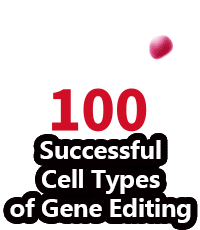Is there anything CRISPR can’t do? Scientists have wielded the gene-editing tool to make scores of genetically modified organisms, as well as to track animal development, detect diseases and control pests. Now, they have found yet another application for it: using CRISPR to create smart materials that change their form on command.
The shape-shifting materials could be used to deliver drugs, and to create sentinels for almost any biological signal, researchers report in Science on 22 August1. The study was led by James Collins, a bioengineer at the Massachusetts Institute of Technology in Cambridge.
Collins’ team worked with water-filled polymers that are held together by strands of DNA, known as DNA hydrogels. To alter the properties of these materials, Collins and his team turned to a form of CRISPR that uses a DNA-snipping enzyme called Cas12a. (The gene-editor CRISPR–Cas9 uses the Cas9 enzyme to snip a DNA sequence at the desired point.) The Cas12a enzyme can be programmed to recognize a specific DNA sequence. The enzyme cuts its target DNA strand, then severs single strands of DNA nearby.
This property allowed the researchers to build a series of CRISPR-controlled hydrogels containing a target DNA sequence and single strands of DNA, which break up after Cas12a recognizes the target sequence in a stimulus. The break-up of the single DNA strands triggers the hydrogels to change shape or, in some cases, completely dissolve, releasing a payload (see ‘CRISPR-controlled gels’).
The team created hydrogels programmed to release enzymes, drugs and even human cells — for instance, as part of a therapy — in response to stimuli. Collins hopes that the gels could be used to make smart therapeutics that release, for example, cancer drugs in the presence of a tumour, or antibiotics around an infection.
Smart objectives
The researchers also integrated CRISPR-controlled hydrogels into electronic circuits. In one approach, they placed hydrogels inside a small chip-like device called a microfluidic chamber that was linked to an electronic circuit. The circuit switched off in response to the detection of genetic material from pathogens including the Ebola virus and methicillin-resistant Staphylococcus aureus (MRSA). The team even used the hydrogels to developed a prototype diagnostic tool that sends a wireless signal when it recognizes genetic material from Ebola in lab samples. When a team member carried a wireless detector in a backpack, they were able to identify positive samples simply by walking past them.
Dan Luo, a bioengineer at Cornell University in Ithaca, New York, says that the CRISPR hydrogels are an improvement on other responsive hydrogels because scientists can easily determine what triggers a change in the material. Past efforts to create smart hydrogels used enzymes that either did not cut specific DNA sequences or cut only a small number of specific sequences, limiting their adaptability.
“We’re in the CRISPR age right now,” Collins says. “It’s taken over biology and biotechnology. We’ve shown that it can make inroads into materials and bio-materials.”
References
1.English, M. et al. Science 365, 780–785 (2019).
